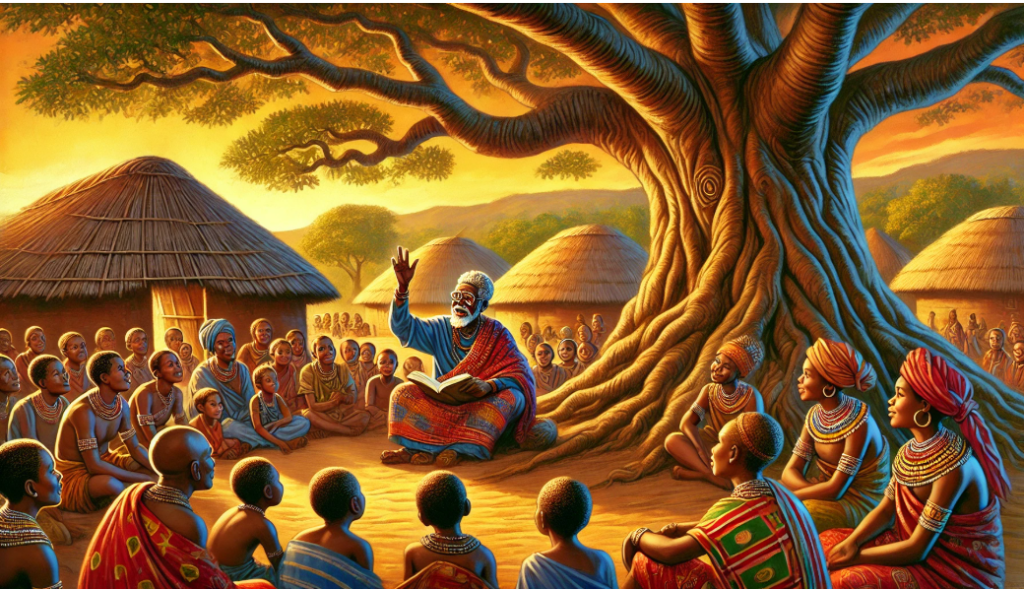
The Art of Storytelling: How Oral Traditions Shape Cultural Identity
For centuries, long before the written word became the dominant mode of communication, oral storytelling served as the lifeblood of cultural identity. In communities of color, from the African griots to Indigenous elders, stories have been more than mere entertainment—they are the vessels of history, the keepers of wisdom, and the catalysts for social change. These narratives, passed down through generations, have shaped worldviews, preserved legacies, and fostered a sense of belonging. But in an increasingly digital age, where attention spans are fleeting and information is consumed in fragments, how do we ensure that these rich oral traditions are not only preserved but also elevated?

The Roots of Oral Storytelling
Oral storytelling is as old as humanity itself. In Africa, griots—revered storytellers, historians, and musicians—have long been the custodians of their people’s histories. Through rhythmic poetry, song, and prose, they have chronicled the triumphs and trials of their communities, ensuring that no generation is disconnected from its roots. Similarly, Indigenous cultures across the Americas, Australia, and the Pacific have relied on oral traditions to pass down creation stories, spiritual teachings, and survival knowledge. These stories are not just told; they are performed, often accompanied by music, dance, and ritual, making them immersive and deeply personal experiences.
In many ways, oral storytelling is a communal act. It is not just the storyteller who holds power but also the audience, who listens, interprets, and carries the story forward. This dynamic creates a living, breathing tradition that evolves with each retelling, adapting to new contexts while retaining its core essence.
The Power of Storytelling in Shaping Identity
Stories are more than narratives—they are mirrors that reflect a community’s values, struggles, and aspirations. For marginalized communities, oral storytelling has been a tool of resistance and resilience. Enslaved Africans, for example, used folktales to encode messages of freedom and hope, often disguising subversive ideas in seemingly simple tales. Indigenous stories, too, have served as acts of defiance against cultural erasure, preserving languages and worldviews that colonization sought to destroy.
These stories also play a crucial role in shaping individual and collective identity. They answer questions like: Who are we? Where do we come from? What do we stand for? For young people, especially, hearing stories from their elders fosters a sense of pride and continuity. It reminds them that they are part of something larger than themselves—a lineage of strength, creativity, and wisdom.
The Challenge of the Digital Age
In today’s fast-paced, technology-driven world, the art of oral storytelling faces unprecedented challenges. The rise of social media, streaming platforms, and instant communication has shifted how we consume and share stories. While these tools offer new opportunities for storytelling, they also risk diluting the intimate, communal nature of oral traditions. A TikTok video or a tweet, no matter how compelling, cannot replicate the depth and nuance of a story shared face-to-face, around a fire, or in a sacred circle.
Moreover, the digital divide disproportionately affects communities of color, making it harder for some to access and leverage these new platforms. This raises important questions: How do we ensure that oral traditions are not lost in the transition to digital spaces? And how do we use technology to amplify, rather than overshadow, these ancient practices?
Honoring and Elevating Oral Traditions
The key to preserving oral storytelling lies in striking a balance between tradition and innovation. Here are a few ways we can honor and elevate these traditions in the digital age:
- Documenting Stories: Recording oral histories through audio and video ensures that they are preserved for future generations. Projects like StoryCorps and local community initiatives have shown the power of archiving personal narratives.
- Blending Old and New: Digital platforms can be used to share traditional stories in creative ways. Podcasts, YouTube channels, and social media accounts dedicated to oral storytelling can reach global audiences while staying true to the essence of the tradition.
- Community Storytelling Events: Hosting live storytelling events, whether in person or virtually, keeps the communal aspect of oral traditions alive. These gatherings can be spaces for intergenerational dialogue, where elders share stories and younger generations reinterpret them.
- Education and Advocacy: Incorporating oral storytelling into school curricula and cultural programs ensures that young people understand its value. Advocacy for the preservation of Indigenous languages and storytelling practices is also crucial.
- Collaborative Art Projects: Combining oral storytelling with other art forms, such as visual art, theater, and music, can create powerful, multidimensional experiences that resonate with contemporary audiences.
A Living Legacy
Oral storytelling is not a relic of the past; it is a living, evolving practice that continues to shape cultural identity. In a world that often prioritizes speed and convenience over depth and connection, these traditions remind us of the power of the human voice and the importance of shared narratives. By honoring and elevating oral storytelling, we not only preserve the wisdom of our ancestors but also ensure that future generations have the tools to tell their own stories.
In the words of the African proverb, “Until the lion learns to write, the tale of the hunt will always glorify the hunter.” Oral storytelling gives voice to the lion, ensuring that every perspective is heard, valued, and remembered. It is through the


